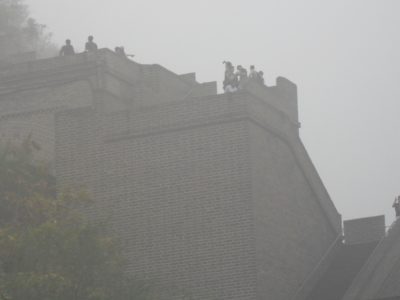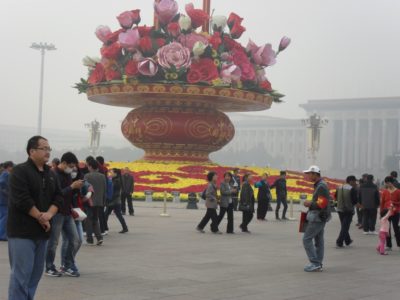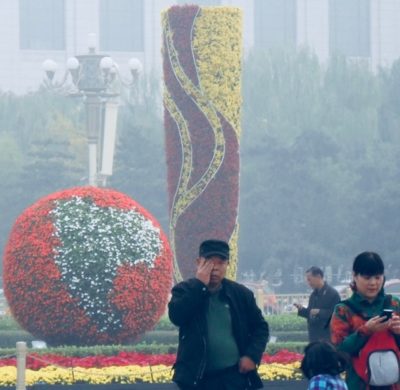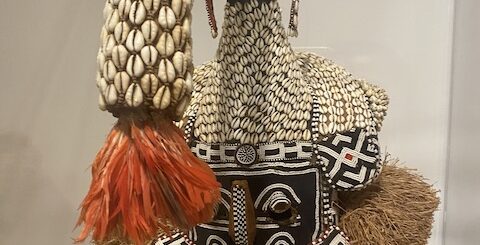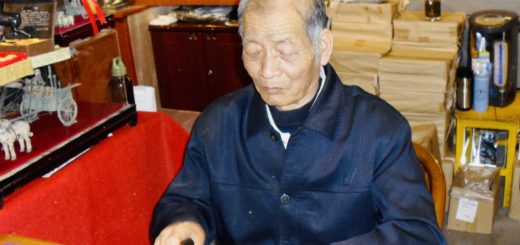Trip to Bejiing, China, October 2014
Tiananmen Square
We arrived in Beijing, China on October 8th, 2014 and Great Wall of China was the first leg of our visit. But this magnificent beast, unfortunately, was enveloped in a very heavy Beijing smog. Visibility was disappointingly limited. we couldn’t take good pictures. Although built in 6th century, it is still a marvel for everyone to see. We were taken to the section of the wall which gets the most tourist. Although the tour guide warned everyone about the slippery conditions due to the rain, lot of people attempted to climb and walk as much as they possibly could as you can see.
Our exploration of Beijing continued with a visit to Tiananmen Square. The square was fully decorated with all kinds of ornamental plants; everything around the square was embellished with beautiful, colored flowers for the Golden Week which had just ended the day before after a week celebration.
Tiananmen Square is a large square in Beijing. It is the fourth largest square in the world. Although its name is historical, and has great cultural significance, it became best known after the Tiananmen Square protest of 1989. Since the protest was pro-democracy, it was put down by the government, and several hundred civilians were shot by the soldiers and martial law was declared
The square is used as a meeting place and important buildings, such as National Museum of China, the Great Hall of the People, and the Mausoleum of Mao Zedong, surround it and the Tiananmen Gate separates it from the Forbidden City.
Because Tiananmen (“Gate of Heavenly Peace”) is in front of the Imperial city, and north of the Tiananmen Square where historical events take place, it has a great political significance. After the founding of Peoples Republic of China in 1949, October 1st was declared a national day and a Portrait of Mao Zedong was hung at the square. Still each year the old portrait is replaced with a newer one. The portrait weighs 1.5 tonnes and is replaced by a spare one when it is vandalized.
Imperial Palace also know as Forbidden city was the home to the Chinese Royalty for 600 years. When the Imperial palace was in use, people were not allowed to approach it, hence the name Forbidden City.


